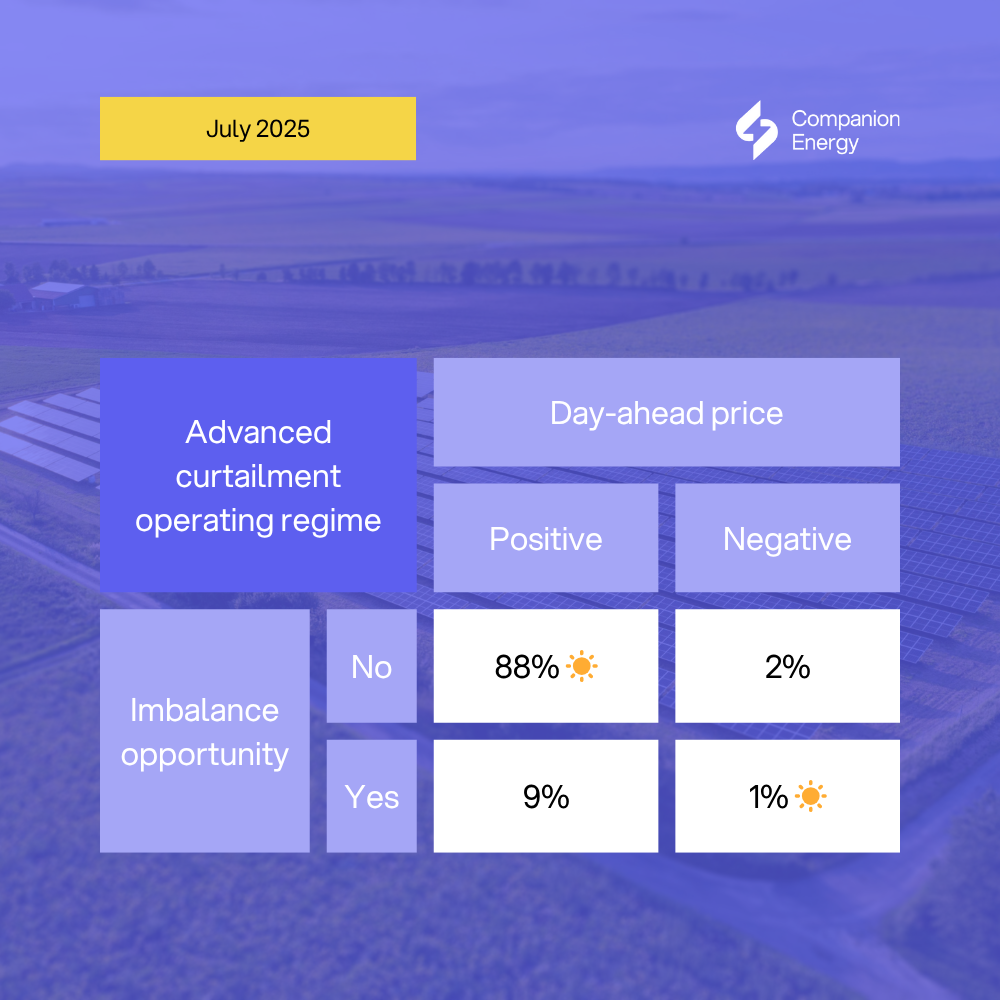Limited opportunities
In July, negative day-ahead prices occurred in just 3% of hours, reducing the opportunities for advanced curtailment strategies to deliver additional value.
For most of the month, prices remained firmly in positive territory, meaning curtailment optimisation played a smaller role in overall performance compared to previous months.
Naive solar production was the optimal strategy for almost 90% of the time.

The debate on curtailment’s role
Some industry voices suggested that the scarcity of negative prices was the result of increased curtailment itself, with generation being held back in anticipation of low-price events, keeping market prices supported.
August proves otherwise
Early August price patterns have already told a different story. Negative prices have returned frequently, showing that July’s conditions were largely weather and market-driven rather than the result of a structural change in curtailment behaviour.

Key takeaway
Curtailment value is highly sensitive to market dynamics.
Even with advanced operating regimes, opportunities can swing significantly from month to month.
Staying responsive to real-time market signals remains essential for maximising value.


%20(1).png)
.png)





